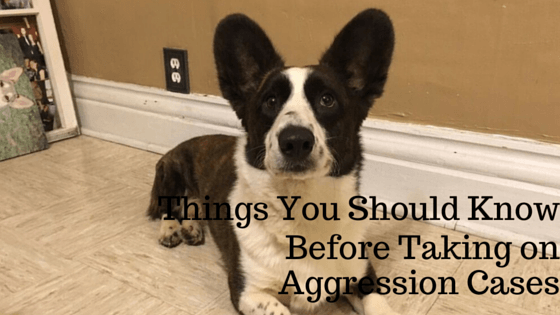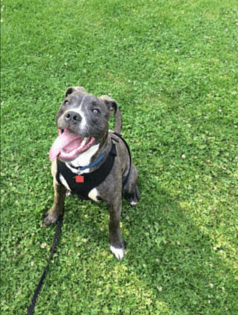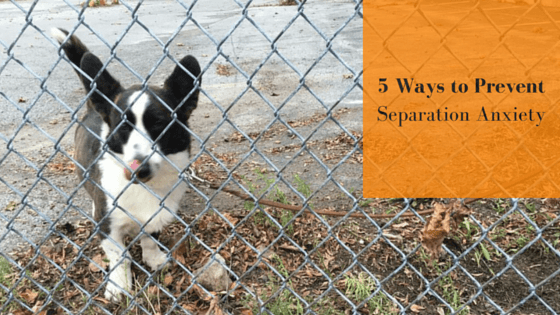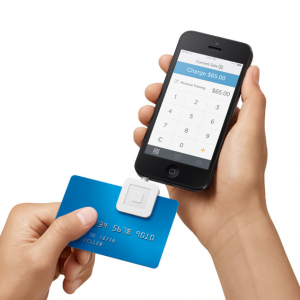![Things You Should Know Before Taking On Aggression Cases]()
by Ines | Oct 23, 2014 | Events, Training Methods

There is no doubt that dog training is dangerous, but you’d be surprised by how many dog trainers are not taking the right precautions when they work with aggression cases. Michael Shikashio, President of the IAABC and outstanding certified dog trainer, hit the nail on the head with his speech at the APDT Conference in Hartford last week. His talk, Staying Safe in Aggression Cases, discussed the following points:
Be Aware Of The Responsibilities Of Aggression Cases
When you take on an aggression case, you’re taking on a lot of responsibilities whether or not you’re aware of them. Consider the liability of handling an aggressive dog. What will your procedure be if the dog bites a family member, another dog, a stranger, or yourself? What are the legal ramifications of such an incident? If you are bitten, you could suffer from physical and psychological injuries as well as a damaged reputation. What will happen to the dog if he bites someone? Are you mentally prepared to handle such a case? Ignoring the possibilities does not make them less likely to occur. You must be prepared for the worst even if you’re expecting the best.
Gather As Much Information As You Can
Michael discussed the usefulness of paper or online questionnaires, but stated that ultimately those cannot compete with an in-person discussion session with the owner. There are non-verbal cues that you can pick up on in person. Speaking with a client in their home makes them more comfortable and you can examine the environment for lesson set ups in the future. Gathering a detailed bite history in person can help you get more information about each incident.
Setting Yourself Up For Success
Michael discussed that there are some simple steps you can take to protect yourself during the first meeting with the dog. Clear written and verbal instructions are a must. Even then, he encourages you to call the owner when you arrive and before you get out of the car to make sure all instructions have been followed. You must assume that the dog will bite if given the opportunity so wear appropriate clothing to the meeting.
Discuss management techniques the owner can put into place such as using two leash attachment points (collar and harness), a waist leash, muzzles, gates, and barriers. He encourages you to demonstrate the proper fitting of all harnesses or collars with the owner on a stuffed animal before the first meeting with the dog.
Back Up Protection
Unfortunately, we know we cannot trust owners to follow instructions 100% of the time or 100% correctly. Accidents happen so have your own personal shield against attacking dogs. Wear secure shoes, avoid loose clothing, and make sure your treat pouch is secure. Bring items like a spray shield for a last resort reaction if you’re attacked. Make sure to remove hats, sunglasses, and scarves before the meeting.
Defensive Handling
One of the most common mistakes trainers make is assuming the dog is alright with them and letting their guard down. Dogs can easily push past their thresholds in order to gain access to treats or food. Luring dogs into your space that aren’t ready to be that close can set yourself up for a bite. Using the treat and retreat game is important, but make sure you toss treats at a good distance behind the dog to keep a safe distance. Also, avoid sudden movements during this game.
Defensive handling is best learned by shadowing an experience trainer, states Michael. Things like leaning away from the dog while training, knowing strong leash grip techniques, and knowing how to use your center of gravity should be practiced well before your first aggression case.
Know Your Options
Ultimately, if you are bitten, you had better know where the nearest emergency room is. Knowing this information before the lesson will make an accident less stressful. You won’t be left wondering where to go or asking your client to look it up for you. It is also not a bad idea to keep a first aid kit in your car for emergencies.
We’d like to give a big THANK YOU to Michael Shikashio for presenting this very important information to trainers at the APDT Conference this year. You can contact Michael for more information at Complete Canines.
Have you started taking on aggression cases? What precautions do you have in place to protect yourself?
Recommended Articles
![Things You Should Know Before Taking On Aggression Cases]()
by Ines | Oct 22, 2014 | Events

Dr. Ian Dunbar is the founder of the Association of Professional Dog Trainers (APDT). He is known as a leader in the humane training movement and is a national advocate for proper puppy socialization. We attended his talk during the APDT Conference in Hartford and have consolidated some of the best points.
Preventing Your Dog From Being Attacked
One behavior that is so incredibly simple its scary can save a client’s dog from being attacked. One of the biggest triggers for fights is hard eye contact from one or both dogs. Asking your dog or a clients dog to turn in front of you and give you eye contact can single-handedly prevent dog fights. This behavior keeps you dog’s eye on you and their back to the other dog. This behavior doesn’t have to be on cue. Simply lure the dog in to the position and continue feeding until the strange dog has passed. This behavior sends the message that your dog is not interested in engaging in any way with the strange dog. What kind of dog is going to instigate a fight with a dog who’s turned his back?
Continuous Training Isn’t Optional
Just like in people, anxieties get stronger as the dog ages. Puppies and children are not born with phobias or fears, but as they get older their anxiety increases. This is the reason clients must understand that training is not a one time commitment – it is a lifetime commitment. It should continue throughout the dog’s life to prevent regression.
5 Reasons Puppies Are Not Socialized Correctly
Dr. Ian Dunbar mentioned that owners have 5 usual excuses for not properly socializing a puppy.
- Fear of disease.
- Fear of overwhelming a puppy.
- Puppy already seems to be well-adjusted.
- Unable to recognize puppy’s warning signs.
- Denial and the expectation that the puppy will grow out of problem behavior.
Dr. Dunbar claims that socialization is very important in preventing dog-dog aggression, but many owners fail at doing this correctly. Owner education is the solution to this.
Differential Classical Conditioning
While classical and operant conditioning are not exclusive from each other, you must give rewards to the dog no matter his behavior in order for classical conditioning to occur. Differential classical conditioning means treats when the dog is showing desired behaviors (no barking, sitting, etc) and verbal praise or lower valued treats when the dog shows a slight reaction such as growling. Here is the breakdown:
- No trigger – No rewards.
- Trigger present, small reaction – Give verbal reassurance. Increase distance in the future.
- Trigger present, no reaction – Jackpot with rewards.
This process allows the trainer to reward desired behaviors more strongly while maintaining classical conditioning during all exposures to the trigger.
Using Secondary Reinforcers For Classical Conditioning
We all know that bringing food into a strange group of dogs can cause issues. Using a secondary reinforcer that is only valuable to your client’s dog and not other dogs will help prevent resource guarding issues. Lots of work must be put into making a secondary reinforcer strong enough to use for classical conditioning, but it is a great alternative to using food in training.
The Jolly Routine
This training technique was founded by Bill Campbell in the 1980s. Stiffness and anxiety fuel reactive dogs. Clients can overcome their anxiety by putting their training to a rhythm. This makes their learning progress more smoothly as well as their dog’s. The jolly routine involved acting very excited and happy when the trigger appears. Dancing is usually involved to truly get in the groove and eliminating anxiety. It is very difficult to feel upset if one is dancing. Dancing and treating are perfect accessories to a classical conditioning protocol.
We enjoyed learning about Dr. Ian Dunbar’s perspectives on dog behavior and his concepts behind treating dog-dog aggression. What do you think about these main points?
Recommended Articles
![Things You Should Know Before Taking On Aggression Cases]()
by Ines | Oct 16, 2014 | Events
This week we are attending the APDT Conference in Hartford. As day one comes to a close, we want to share some of our favorite moments.
Conference Opening Ceremony
Amber Burckhalter from the APDT Board of Trustees gave a beautiful introduction and moment of silence for Dr. Sophia Yin who passed away just a few weeks ago.


Jill Marie O’Brien, also a member of the Board of Trustees, awarded Don Hanson with the member of the year award.

Karen Pryor, who was currently hosting a workshop in Europe, accepted an award of Lifetime Achievement from the APDT. Then Patricia McConnell, Phd., gave a heartfelt speech as the keynote speaker.

Dr. McConnell’s speech was followed by Ray Coppinger who spoke about the evidence that supports the evolution of dogs – which he showed was little to none!

After a brief 1.5 hour lunch break the seminars began. Among the variety to choose from, we chose to attend Ian Dunbar. His talk about puppy socialization and dog-dog reactivity was entertaining. The practical applications of his discussion points will be interesting to put into place, but we enjoyed his straight forward perspective about dogs.

Day two will commence shortly and we look forward to sharing more information and pictures later. Make sure to follow up on Twitter @ModernTrainer.
![Things You Should Know Before Taking On Aggression Cases]()
by Ines | Oct 11, 2014 | Events
The Pet Professional Guild Convention
It was recently announced that the Pet Professional Guild, founded by Niki Tudge, will be hosting their first annual convention next year. The PPG was founded to support force-free training techniques and promote education and research in the dog training industry.
A world where people and pets can live together to their mutual benefit and where pets can live and function free from physical and mental pain, stress and fear as valued family members.
It was established in 2012 and has since grown to over 900 members. The PPG abides by a few Guiding Principles that resonate with science-based training methods.
The Force Free Summit – Reaching for a Higher Standard
 In 2015, their first annual convention will be held in Tampa, Florida during November 11, 12, and 13. They are planning a live streaming event and have come up with three concrete goals for the event:
In 2015, their first annual convention will be held in Tampa, Florida during November 11, 12, and 13. They are planning a live streaming event and have come up with three concrete goals for the event:
- Help build awareness of our organization and build a stronger collaboration of force-free pet professionals.
- Help build communication and networking opportunities with the veterinary community and veterinary educators.
- A very interactive and fun educational format.
The development of an organization composed of force-free training professionals who choose to base their techniques on science is truly something remarkable. We are looking forward to seeing how the pet professional guild convention will pan out and will keep you posted here as well as on Twitter.
Recommended Articles
![Things You Should Know Before Taking On Aggression Cases]()
by Ines | Oct 10, 2014 | Business
Prepare Your Clients As Much As You Prepare Their Dogs
When you’re starting out as a professional dog trainer, you probably come to lessons prepared with extra treats, a treat pouch, and a clicker. You might even bring a variety of toys in the trunk of your car. This is a wonderful way of being prepared to train your client’s dog, but you can miss out on excellent learning opportunities for the client if they know you always bring the goods anyways.
Create Expectations
 Ensuring that you have the proper tools for training is important to accomplish the training goals you set out to achieve, but we’d like to advise that you let that preparation fall in your clients hands. Encouraging your clients to provide all the necessary equipment helps them in these ways:
Ensuring that you have the proper tools for training is important to accomplish the training goals you set out to achieve, but we’d like to advise that you let that preparation fall in your clients hands. Encouraging your clients to provide all the necessary equipment helps them in these ways:
- It teaches them to think about their dog’s perspective. Reinforcers should be items their dog wants to work for. Ultimately, your clients need to be able to figure this out on their own.
- It teaches them how to be prepared for anything. Having them be responsible for supplying a variety of reinforcers and management tools helps them learn about when and how to use the tools you ask them to provide.
Dog Training Supplies Your Clients Should Supply
Treat Pouch
We’ve taught classes and lessons with and without recommending a treat pouch. We’ve found that, by far, clients who use pouches are less likely to bribe their dogs than those that don’t wear them. Clients that don’t wear treat pouches are more likely to hold a baggy of treats in their hands while training which is essentially bribery. Pouches help keep the food out of the clients hands as they learn how to juggle the leash, clicker, and reinforcers.
Clicker
Not all positive trainers use clickers, but more and more trainers are incorporating them into their training. Having a dog (and owner) that is “clicker savvy” can help address behavior issues down the road. We recommend teaching owners and their dogs at least one behavior with the clicker so that both are familiar with the concept and implementation of it. Check out our favorite explanation of what clicker training is so you’re sure you know how to explain it before you work with your next client!
Low and High Value Treats
One of the most important lessons you can teach a client is how and when to use each treat. Therefore, asking them to bring multiple types of treats to class or to a lesson is a great way to show them when each one will work and why it matters.
6 Foot Leash & Harness
Clients can now purchase a variety of tools to attach to their dogs. You must be extremely specific when recommending a leash and harness. Leashes come in a variety of lengths and structures. If you just say “a leash and collar” you can end up with endless combinations including a flexi-leash with a prong or choke chain! Your directions should get as specific as “Please bring a 6 foot, non-retractable, nylon or leather leash and a front attach Easy-Walk harness.” Anything less and you could end up with a harness that tightens around the dog’s body when it pulls or a double attachment retractable leash!
Relaxation Mat
While you’re speaking and giving instructions in class, the dogs usually get ignored as their humans (hopefully) listen. Providing them a mat to lie on while waiting for the next exercise communicates to them to be patient and gives them concrete information about what they should be doing. It is fairly easy for owners to reinforce their dogs while they continue listening to you speak. This relaxation exercise will help dogs learn how to just “hang out” while their owners pay attention to something else.
Ultimately, placing more responsibility on the client will teach them more important lessons than always bringing the necessities for them. They will be continuing on the training in the future without you so they need to learn those skills sooner rather than later. Share your thoughts about this idea in the comments below!
Recommended Articles:
![Things You Should Know Before Taking On Aggression Cases]()
by Ines | Oct 9, 2014 | Business
Dog Trainers On The Go: Here are the best 3 ways to accept mobile payments.
Most of our time is spent out and about in client’s homes or teaching classes. Taking mobile credit card payments has become necessary, but there are some options that are much better than others. Don’t let companies take more than their competition would! These are our top 3 recommendations to accept credit card payments while you’re on the go.
The Square Up mobile payment system is one of the original mobile payment systems. Its design and system is intuitive and easy to navigate which is great when you’re juggling clients, dogs, and payments at the same time! Here are some of our favorite features about this system:
- Quick and automatic transfer to your bank account in 1-2 days.
- Works on and off-line.
- Email or text receipts.
- Request client’s feedback on their receipts.
- Fee: 2.75% per swipe or 3.5% + $0.15 per manual entry.
PayPal has been a leading force in online payments, but they were not the first to tackle the need for mobile payments. Their system is great to send invoices that are quick and painless to pay which is ideal for client convenience.
- Clients can pay from their own mobile app which eliminates the need for swiping credit cards.
- Get a PayPal Debit Card and use them like a bank account. Receive 1% cash back on signed purchases.
- Fee: 2.7% per swipe or 3.5% + $0.15 per manual entry.
Flint was founded in 2011 and is a solid alternative to Square Up and PayPal. It allows customers to easily pay in person or online and you don’t have to remember an extra attachment for your phone!
- No card readers! Scan instead of swipe.
- 1-2 day deposit into your bank account.
- Connects with Quickbooks.
- Can accept coupons.
- Send automatic reminders and track tools.
- Fee: 1.95% per scan for Debit and 2.95% for Credit.
Accepting mobile credit card payments is an ideal way to make sure you receive payments for your services. Having to constantly email clients to remind them to pay an online invoice is no longer necessary! These companies are here to stay and help with mobile businesses like dog training. Compare the benefits of each and decide which one suites your particular needs the best.
Recommended Articles
![Things You Should Know Before Taking On Aggression Cases]()
by Ines | Oct 8, 2014 | Research
Are Electronic Collars A Welfare Risk To Dogs?

A recent peer-reviewed study explained by Science Daily analyzed how electronic collars used to correct undesired behaviors effected a dog’s anxiety and stress levels. The dogs stress levels were measured by cortisol levels in their saliva and by observing calming signals such as sniffing and yawning. Behaviors that were addressed included chasing livestock and poor recall.
Misuse – The Biggest Threat With Electronic Collars
The trainers in the first study did not use the collars within the recommended guidelines from the manufacturer. We’d like to claim that many average dog owners are not very likely to utilize these collars exactly as the instructions said due to their desired for improved behaviors quickly or simply a lack of understanding about how sensitive dogs can be without showing obvious signs of discomfort.
The second study, which included over 60 dogs, used the collars as directed by the manufacturer. This resulted in less stress than the first study, but did not eliminate all anxiety. They consistently showed more tension and less engagement with the environment than those in the control group.
Ultimately Electronic Collars Are Unnecessary
The study concluded that there are more hazards with electronic collar training than with consistent positive reinforcement based training. The risk of side effects due to electronic collar training increases if the guidelines from the manufacturer are ignored. Ultimately, we must understand that most normal dog owners cannot be trusted to have the correct understanding of timing and intensity levels that most pros still have yet to master; therefore, making this tool risky and unnecessary.
Lead author Jonathan Cooper, Professor of Animal Behaviour and Welfare at the University of Lincoln’s School of Life Sciences, said: “e-collar training did not result in a substantially superior response to training in comparison to similarly experienced trainers who do not use e-collars to improve recall and control chasing behaviour. Accordingly, it seems that the routine use of e-collars even in accordance with best practice, as suggested by collar manufacturers, presents a risk to the well-being of pet dogs. The scale of this risk would be expected to be increased when practice falls outside of this ideal.”
![Things You Should Know Before Taking On Aggression Cases]()
by Ines | Oct 7, 2014 | Training Methods
From puppy classed to reactive dog classes, judging the stress levels of the dogs is an important part of making the class successful. There are three optimal ways to quickly judge a dog’s level of stress during training. Reducing stress levels in a dog is important to the learning process. Learning is hard without all the environmental distractions in a group class or at a park so reducing the level of stress the dogs are in will improve your training success rate and increase the amount of time you can train them effectively by lowering the level of fatigue the dog will experience.
Observe Body Language
Excessive sniffing, yawning, lip licking, scratching, or other passive behaviors are a sign that the dog needs a break, more space between dogs, or more positive reinforcement. Ideally, training sessions shouldn’t last longer than 5 minutes at a time so make sure your client’s aren’t working their dogs too long.

Food Intake
When a dog’s stress levels increase, they will likely stop eating treats they were accepting just a few minutes before or they’ll take the treats more harshly than before. If you hear clients complain that their dog must be full or that the dog is hurting them when they take the treat, ask your clients to give their dogs a small sniffing break away from other dogs or people. This will help the dog “reset” and regroup in order to continue learning. We all take breaks while studying for exams, right?
Response To Known Behavior Cues
Considering that a dog knows that sit means sit at home, at the park, at the vet’s office, and everywhere else, if the dog does not sit when asked during class it could be a sign that the dog is too stressed to comply or understand what is needed of them. This is especially true when working with reactive dogs and their “fight or flight” response has been triggered. It isn’t that the dog is being stubborn, but rather that they dog cannot think straight because they are worried for their physical safety. If someone put you in your most feared situation and asked you to do math, how well do you think you would do?
Stress is an emotional roller coaster for everyone – people included. Being able to recognize it in dogs will help your training proceed more smoothly and efficiently. Implement management techniques to help dogs (and their people) feel more comfortable in group classes or lessons out and about.
What’s one of your favorite stress management techniques for dogs or people? Share it with us below in the comments!
Recommended Articles
![Things You Should Know Before Taking On Aggression Cases]()
by Ines | Oct 6, 2014 | Training Methods

Many dog owners come to us with broken human-dog bonds. We recommend modern dog training techniques that will aid in repairing their bond while creating better behaved dogs. However, what do you do when the owner and dog have too strong of a bond and are literally inseparable?
Separation anxiety is an epidemic in the US. Dogs are injuring themselves while trying to get out of the crate or destroying homes when the owner leaves. They are angering neighbors with constant barking and living in misery and depression until their owners come home. This behavior is dangerous to their health and mental well-being and is almost entirely preventable.
Separation Anxiety Prevention Techniques
Socialization
One of the prominent triggers that can contribute to separation anxiety is under socialization. A dog who is sensitive to the sounds and smells of the outside world can startle easily if a loud sound occurs outside while you are away. Educating clients on the importance of proper socialization is an important factor in preventing separation anxiety. Socialization should teach the dog that the outside world is fun and exciting rather than scary and intimidating. Make sure your clients understand that they should not force their dogs into situations they aren’t ready for.
According to the American Veterinary Society of Animal Behavior, the critical socialization period is before the puppy hits 16 weeks of age. This means you’ll want to emphasize the need to get puppies out into the real world before they are fully vaccinated. Unfortunately, more dogs perish due to behavior issues than medical issues. Clients who wait until their puppies are fully vaccinated run the risk of behaviors issues due to under socialization in the future. In general, a puppy who is allowed to explore the outside world before 16 weeks will be more confident and less skittish as an adolescent or adult.
Crating
Encourage clients to put their dogs in crates. Every dog should learn to love being crated for practical reasons (emergencies, vet visits, travel, etc). Crating is the safest way to contain a dog while client’s are away during the day. Dogs should be crated throughout the day when the client is home and away. The most detrimental failure of crate training is putting the dog in the crate only when you leave the house. Teach clients that this should be a very happy and fun place for the dog to hangout, whether or not the clients are home, and you’ll likely change the dog’s emotional response as well.
Relaxation Exercises
The most popular train of thought I come across among clients is that you must constantly give your dog physical exercise. Their dogs grow up with plenty of daily exercise. Unfortunately, their dog adapts to the level of exercise and then the behavior problems arise due to boredom or lack of training. Relaxation exercises are incredibly important. Just like the trend with people to do meditation or yoga, relaxation is something that has to be taught to most dogs. Self control and impulse control don’t come naturally to dogs. They usually need a bit of guidance to learn how to be still and calm amidst the chaos of life these days.
Mental Stimulation Activities
Let’s face it, our clients are increasingly busy dealing with work and raising a family. Dogs don’t get as much physical or mental stimulation as they used to. Bored dogs experience more anxiety which can lead to separation anxiety. When the owner isn’t home, the dog experiences excessive boredom. One solution is to provide the dog with activities when the owner leaves. Leaving a dog to fend for itself in a crate or loose in the house is a great way to set them up to fail. Encourage owners to provide their dogs with safe chew toys, puzzles, and other activities when they leave the house.
Client’s Misdiagnosis
Clients that have a tendency to cater to their pet’s demands may fall victim to attention seeking behaviors and assume they are dealing with separation anxiety. Extinction bursts and temper tantrums can weaken a client’s intentions and make them question their methods. Ignoring a crying baby, or puppy in this case, is difficult, but important in creating an independent pup. For example, if the client begins to ignore the puppy and the puppy only barks louder, they may think the training isn’t working and tend to the puppy’s wants. Unfortunately, this creates a dog that knows how to get a reaction out of their owners. In the long run, dog that decides what he wants and knows how to get it when he wants will experience increased anxiety if his demands are not met. A consistent schedule and clear rules are important in preventing separation anxiety from the beginning.
Linda Michaels has a nice, simple article on the Positively Blog about ways you can treat and prevent separation anxiety. She discusses the importance of keeping dogs out of the bed while sleeping and providing accurate levels of stimulation to challenge dogs mentally.
What are your recommendations to new puppy owners? Share your ideas in the comments below.
Recommended Articles
![Things You Should Know Before Taking On Aggression Cases]()
by Ines | Oct 1, 2014 | Business
Starting an LLC is as easy as 1, 2, 3!
Starting an LLC is a great way to protect yourself, your assets, and your family when starting a small business such as a dog training business. It is relatively inexpensive compared to filing for incorporation.
1) Choosing A Name
The first step to starting an LLC for your dog training business is finding a unique name that isn’t already being used in your state. Additionally, the name will need to indicate you are an LLC. This means the name should include “LLC” or “Limited Liability Company.” The name cannot contain regulated words such as “bank” or “insurance.” When you file your LLC, the name will automatically be registered with your state so you will not need to file additional documents.
2) Filing
Once you’ve found the perfect name, you’ll want to file the Articles of Organization. That is fancy terminology for a big document that lays out the structure of your new organization. It includes information like your business name, address, and the names of its members. There is usually a several hundred-dollar filing fee. (In Texas, the fee is currently $300.) You’ll also need to specify the Registered Agent for your company. The Registered Agent is simply the person you choose to be in charge of receiving official documents. As with most dog training companies, this will most likely be you!
3) Operating Agreement & Permits
The Operating Agreement is a document that specifies the official roles each person will fill in the company. Most dog training companies are started by one person so this is pretty simple. In fact, most states do not require an Operating Agreement. At this point, you’ll also want to check with your local business regulations. Some cities require business operation permits.
For more information, please check out the U.S. Small Business Administration website. How to Start an LLC is our absolute favorite resource for all the links and resources you’ll need to get started.
Did this information help you? Share your thoughts or questions in the comments below!
Recommended Articles


















